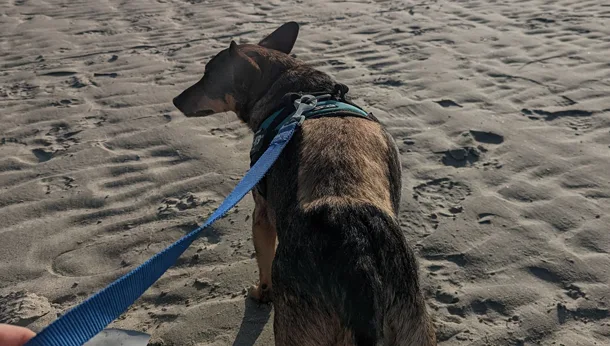Bilbo was referred to HSR after having been assessed at his primary practice. The owners had reported Bilbo to be quiet, lethargic, and weak on his left hind leg. The following morning, Bilbo presented to HSR for acute onset paraplegia.
Neurological examination showed:
- Normal mentation status
- Paraplegia
- Normal postural reactions in the forelimbs but absent in the hindlimbs
- Segmental spinal reflexes were intact
- Normal perineal reflex
- absence of deep pain sensation
Neurological findings were consistent with a lesion to the T3-L3 spinal cord segments, and the most likely diagnosis consisted of intervertebral disc extrusion. An MRI was performed which showed right sided T11-12 degenerated disc extrusion and haemorrhage, causing severe spinal cord compression.
Following the MRI, surgery was performed to decompress the spinal cord by means of a right sided T10-12 hemilaminectomy by one of our specialist neurologists Dr Roberto Jose Lopez.
Bilbo’s prognosis was guarded to very poor. Based on the literature, as he presented paraplegic with no deep pain, the chances of him regaining ambulation were ~ 10%. There is also a risk of myelomalacia which is unfortunately a fatal condition.
Bilbo was non ambulatory on discharge and given 4 weeks strict cage rest with short toilet breaks using a sling. The owners were shown how to express his bladder, given information regarding wound management, and exercises to help improve proprioception including assisted standing, soft tissue massage and passive range of motion.

Bilbo returned to HSR for a recheck and started having physio sessions twice a week. Bilbo presented non-ambulatory but able to move both hindlimbs with assistance. After each session, the owners were given a home exercise plan dependent on his stage of recovery. Exercises included assisted standing, weight shifts and proprioceptive input.
A few weeks later, Bilbo started dry treadmill sessions where his standing could be assisted with bands and the therapist placed his hindlimbs to simulate a gait pattern. After five dry treadmill sessions, Bilbo was able to place his hind limbs and walk with sling support.
Another few weeks later, due to increase in bladder control, Bilbo started having weekly sessions of hydrotherapy on the underwater treadmill. The therapeutic benefits of the water aided in his mobility, limb proprioception and gait pattern. The warm water also reduces muscle tension and pain whilst increasing blood circulation and joint flexibility. Scrunchies and a hands-on approach were also used to help with limb proprioception and weight distribution.
Bilbo has now had five hydrotherapy sessions and is continuing to make progress. Although on land he still shows proprioceptive deficits, he has shown marked improvements since his discharge. Bilbo is now ambulatory and much more stable in stance; he no longer knuckles and can hold his position unaided. We are all delighted with Bilbo’s progress, especially as he was given a 10% chance to ever walk again!